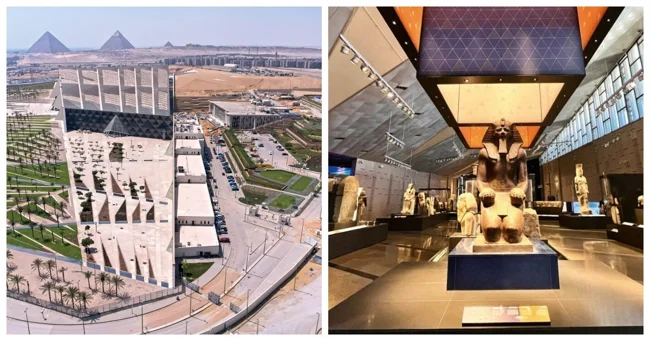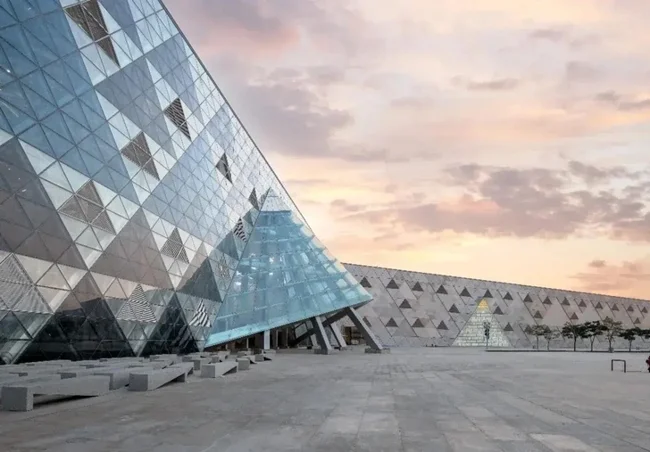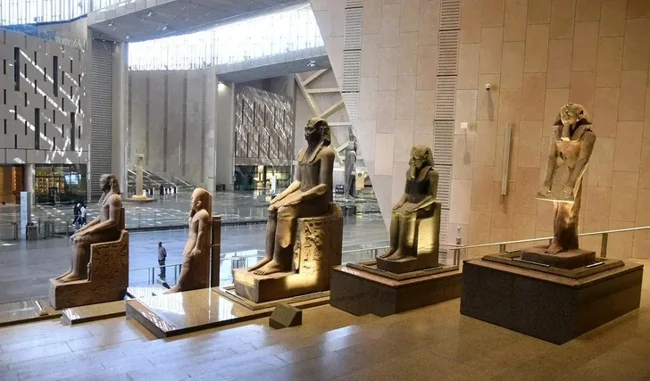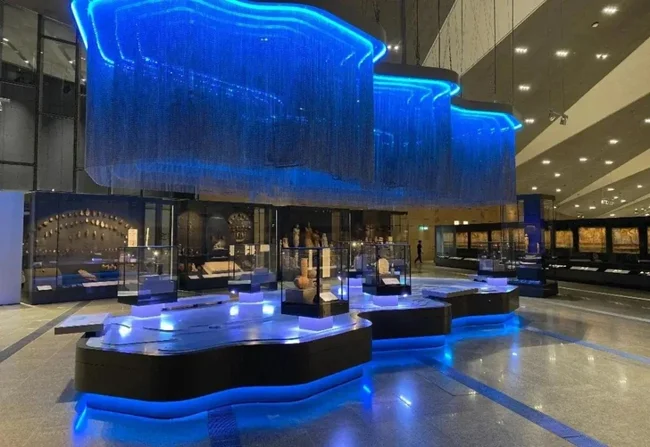A museum, the construction of which lasted 20 years, opened in Egypt (4 photos + 1 video)
The museum, which cost $1 billion to build and has been under construction since 2005, covers 24,000 square meters and will house massive statues and historical artifacts from Egypt's ancient civilization. 
After more than twenty years of construction, the Great Egyptian Museum (GEM) officially opens. This grand cultural space at the foot of the Giza Plateau has become the most expensive museum in the world and houses over 100,000 artifacts, including Tutankhamun's treasure collection, which is on full display for the first time.
The grand opening ceremony on November 1st was accompanied by national fanfare – Egypt issued a commemorative coin, stamp, and souvenir series, and declared the first Saturday in November a day off for all government and private sector employees. 
Located next to the Giza pyramids, the GEM was conceived as the largest archaeological museum on the planet. Its total area is approximately 500,000 square meters, equivalent to 70 football fields.
According to unofficial estimates, the construction cost Egypt over $1.1 billion.
At the entrance, visitors are greeted by an 11-meter-tall, 83-ton statue of Ramses II, which has become the museum's symbol. A grand staircase with majestic statues of ancient Egyptian pharaohs leads to panoramic windows overlooking the pyramids—specially designed to remind visitors that they are all part of a single civilization.
The crown jewel of GEM is the complete collection of treasures from the tomb of Pharaoh Tutankhamun, presented to the public for the first time.
The 7,000 square meters of exhibition space house a gold mask, a cast gold inner coffin weighing 110 kg, chariots, ritual vessels, and the famous golden throne, which archaeologist Howard Carter called "the most beautiful object found in Egypt."
Another wonder awaits in the adjacent hall: two funerary boats of Pharaoh Khufu, discovered in 1954. The first, 42 meters long, has already been fully restored. The second is being reassembled right in front of visitors—restorers are hand-joining 1,700 ancient fragments, allowing guests to observe the process live.

GEM is not just a museum, but a journey through time using technology.
Hundreds of screens, projections, and VR installations transport visitors to the era of the pharaohs. You can see how the pyramids were built, how the Nile flooded, and how people and animals were mummified.
Individual halls are designed as immersive time capsules—darkness reigns, music plays, and prayers resound from ancient Egypt. Each of the four halls is dedicated to a different theme: the cult of the goddess Hathor, the Valley of the Kings, the artisan village of Deir el-Medina, and the sunken cities of ancient Alexandria.
Special attention is paid to the digital reconstruction of the discovery of Tutankhamun's tomb.
Using interactive technology, you can "peek" inside the tomb and see everything as Carter did over a hundred years ago.






















